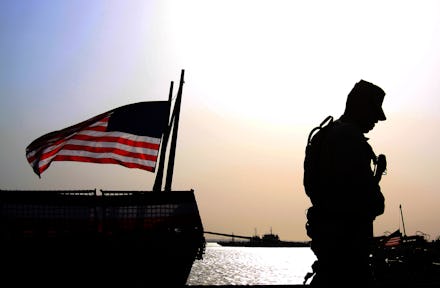Why America Needs the GI Bill Now More Than Ever

The original GI Bill, signed into law June 22, 1944, ushered in what is often proclaimed "the greatest generation."
Not only did returning troops topple Nazi Germany, but they also changed the U.S. higher education landscape by breaking barriers to access once reserved for those in the upper class. No one — not the GI Bill authors, bill sponsors or President Franklin Roosevelt — expected systemic change in higher education or unprecedented economic growth.
The original GI Bill was resisted by some traditional higher education leaders of that time. Harvard President James Conant wrote, "Unless high standards of performance can be maintained in spite of sentimental pressures and financial temptation, we may find the least capable among the war generation, instead of the most capable, flooding the facilities for advanced education in the United States."
That sentiment was quickly put to rest. In 1947 an editor for the New York Times stated that "the GI's are hogging the honor rolls and the Dean's lists." They were outperforming their peers.
Now, we see a new generation of veterans returning home to America's colleges and universities thanks to the Post-9/11 GI Bill. Over one million veterans have taken advantage of the program since it was implemented in 2009, amounting to more than $30 billion in benefits disbursed.
Dubbed by some as the "next greatest generation" and armed with a new GI Bill, one must wonder how the new, Post-9/11 GI Bill compares — in terms of numbers — to the original GI Bill of 1944.
Today, roughly 5% of the total student population is veterans. In comparison, during the height of GI Bill enrollment in 1947, nearly half of all students in higher education were veterans. Imagine — every other student in the classroom at some point after WWII donned the uniform of their nation.
So while the Post-9/11 GI Bill brought a surge of veterans to colleges nationwide, we are not going to see numbers like that of the WWII generation in today's higher education system. Not in this lifetime at least.
While it may be intriguing to relate this era of veterans to generations of the past, a more fitting exercise is to recognize how different today's society — and current military force — is compared to the United States of 70 years past.
During WWII, over 60% of servicemembers were draftees. By comparison, veterans of Iraq and Afghanistan served in an all-volunteer force.
In the 1940s, the entire nation — and virtually the entire world for that matter — found themselves engaged in WWII. After 2001, the spirit of a nation ignited, but faded over time as war became more distant in memory and human connection. Today, less than 1% of all Americans served in Iraq or Afghanistan.
Even those that did not serve in uniform during WWII found themselves engaged in the war effort through rationing, purchasing bonds or working on assembly lines to produce military equipment. In contrast, a reporter embedded with troops in Iraq found a sign that read, "America is not at war. The Marine Corps is at war; America is at the mall."
That sentiment perhaps best captures the divide that exists between today's generation of veterans and civilian society compared to the WWII generation.
Arguably, though, Americans have displayed great support for the troops and returning veterans. And the Post-9/11 GI Bill represents a benefit that partially captures our country's appreciation for the sacrifices made by a new generation of veterans.
While the Post-9/11 GI Bill may not radically redefine higher education, or usher in a renewed middle class, it does strengthen the connection between those within a generation primarily experiencing a society detached from war.
As we commemorate the 70th Anniversary of the GI Bill and pay tribute to its impact on American society, let's consider the potential of today's new GI Bill beyond just an economic return. The new Post-9/11 GI Bill will not only support the effective transition of troops back home, it will also build a bridge between civilians shielded from war and the minority of veterans that know all too well the price of that shield.
The GI Bill of today and decades past is as much a payment for service and sacrifice as it is to the enrichment of American culture.